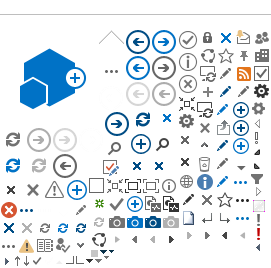Improved Project Delivery with GIS & Surveying
What is Improved Project Delivery with GIS & Surveying?
Improving the project delivery process with the early identification of utilities with the aid of GIS repository and advanced surveying techniques.
[CLOSE]
More about Improved Project Delivery with GIS & Surveying
More text
Improved Project Delivery with GIS & Surveying
Utility conflicts are common for transportation infrastructure projects. Every year transportation agencies spend millions of dollars on problems that arise due to utility conflicts and expending time and resources for potholing utilities. The improved project delivery process recommends the early identification of utilities using advanced survey, GIS and utility investigation/location technologies to reduce costs, improve quality, increase safety, lower risks and minimize project delays.
The improved project delivery process focuses on four elements. First, utilities and utility conflicts are identified during the planning and environmental phases of the project to determine preliminary utility relocation plans. This allows for evaluating project environmental impacts more accurately and identifying utility easements for the relocation by the end of the environmental analysis phase of the project. Once in final design, relocation of utilities can begin prior to construction reducing potential project delays.
Second, advanced survey techniques are utilized to effectively provide project survey information, such as lidar survey with unmanned aerial system or Mobile Terrestrial Laser Scanning. Surveying data is a critical component of the improved process as designers performing preliminary designs need to identify the three-dimensional footprint of the project to determine utility conflicts and right-of-way requirements early in the environmental phase.
Third, a GIS database repository is developed to retain the three dimensional utility data and for use on future projects. Finally, early and frequent coordination with utility owners are performed. With the early identification of utility locations and conflicts and preliminary relocation plans, utility owners can expedite final design and the relocation of the utilities by the utility owners prior to the construction beginning.
Resources
Contacts
Anand Maganti
Supervising Transportation Engineer
Caltrans
Phone: 916-210-9849
Email:
anand.maganti@dot.ca.gov
Aaron Ott
Senior Transportation Surveyor
Caltrans
Phone: 530-632-8457
Email:
aaron.ott@dot.ca.gov
Eric Souza
North Region Chief Deputy
Caltrans
Phone: 530-812-7254
Email:
Eric.souza@dot.ca.gov
Ginger Congi
North Region Office of Surveys Field, Adv. Technology and GIS Chief
Caltrans
Phone: 530-708-5167
Email:
ginger.congi@dot.ca.gov
Ron Tollison
Chief North Region Project Development
Caltrans
Phone: 530-812-5541
Email:
ron.tollison@dot.ca.gov
Scott Douglas
Support Service Statewide Drainage and Utility Specialist
Michigan Department of Transportation
Phone: 248-789-0006
Email:
DouglasS4@michigan.gov
Rob Martindale
Utilities Program Manager
Colorado Department of Transportation
Phone: 970-683-6357
Email:
rob.martindale@state.co.us

